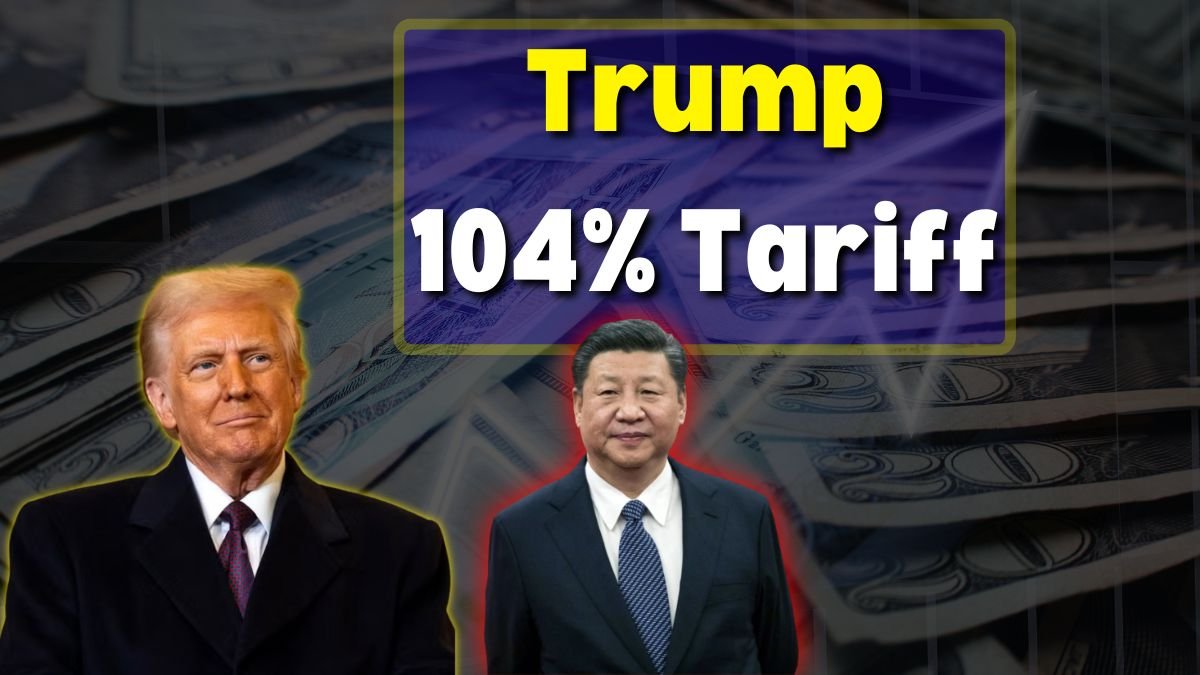Trump 104% tariff on China: The White House announced tariffs on Chinese goods will be increased above the 104% level beginning Wednesday, making it one of the fiercest trade forays of modern times. Such an announcement was made Tuesday by White House Press Secretary Karoline Leavitt, marking a very serious escalation of the ongoing U.S.-China trade conflict.
These new tariffs are now the latest bludgeon in the array of trade restrictions starting with the first term of Donald Trump. In retaliatory trade measures, China was already facing an additional 34% tariff imposition this week. However, with China refusing to lift its own 34% retaliatory tariffs on American goods, the White House retaliated with tariffs on $300 billion of imports in an additional 50%-bringing the total increase to 84%.
China Vows Retaliation as Markets React
With the announcement of additional tariffs, China’s Commerce Ministry condemned the act, italicizing that “it is a mistake upon a mistake” and pledging to further increase countermeasures against U.S. exports. The announcement panicked the financial markets, with U.S. stocks swiftly reversing early gains to close sharply lower.
- Dow Jones Industrial Average fell 320 points (0.84%)
- S&P 500 dropped 1.57%
- Nasdaq Composite slid 2.15%
Asian markets followed suit, with Japan’s Nikkei 225 and Hong Kong’s Hang Seng both opening 3% lower on Wednesday. South Korea’s KOSPI and Australia’s ASX 200 also declined by roughly 1%.
Trump’s Firm Stance and New Executive Order
Leavitt defended the administration’s decision, stating, “Countries like China, who retaliate and mistreat American workers, are making a mistake. President Trump has a spine of steel—he will not break.”
In a further tightening of trade restrictions, Trump signed an executive order late Tuesday tripling tariffs on Chinese goods valued under $800, eliminating the previous “de minimis” exemption. Initially set at 30%, the new rate skyrockets to 90%, directly affecting American consumers who frequently purchase from e-commerce platforms like Shein, Temu, and AliExpress.
Economic Impact and Potential Fallout
China remains the second-largest supplier of U.S. imports, with 439 billion in goods shipped to America last year. Meanwhile, the U.S. exported 439 billion in goods shipped to America last year. Meanwhile, the U.S. exported 144 billion worth of products to China.
The escalating tariffs threaten to disrupt supply chains, increase consumer prices, and potentially trigger layoffs in industries reliant on Chinese manufacturing.
Before Trump’s latest move, the average U.S. tariff on Chinese goods stood at 20.8%, up from 19.3% at the end of his first term. By Wednesday, the average tariff rate on Chinese exports to the U.S. will surge to nearly 125%.
How China Could Strike Back
Chinese state media and influential commentators have outlined possible countermeasures, including:
- Higher tariffs on U.S. agricultural products (soybeans, sorghum)
- Banning U.S. poultry imports
- Suspending cooperation on fentanyl regulation
- Restricting U.S. legal and consulting services
- Limiting Hollywood film imports
- Investigating U.S. intellectual property earnings in China
Liu Hong, a senior editor at Xinhua News Agency, emphasized China’s stance: “China does not provoke trouble, but it is not afraid of it either.”
Global Ripple Effects
Beyond China, dozens of other nations—including the European Union—face new U.S. tariffs ranging from 11% to 50%, with a midnight deadline looming. Despite diplomatic efforts to negotiate lower rates, Leavitt confirmed that Trump has “little appetite” for delays.
“He expects these tariffs to go into effect,” she stated, while noting that the administration remains open to “tailor-made” trade deals with cooperative nations.
As tensions escalate, businesses and consumers brace for higher costs, supply chain disruptions, and a potential reshaping of global trade dynamics. The coming weeks will reveal whether negotiations can ease the strain—or if the world is headed toward a full-blown trade war.


